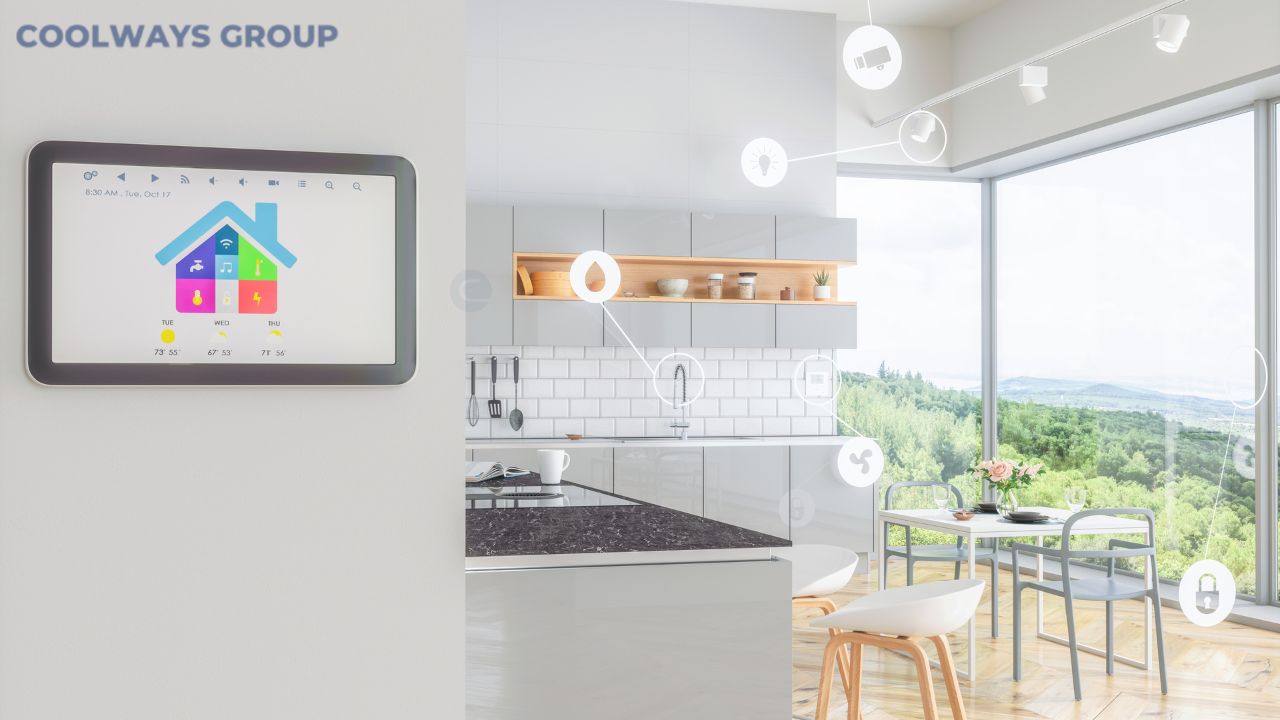
As we approach 2025, homes are no longer just places to live — they’re becoming intelligent spaces that adapt to our needs, routines, and lifestyle. Thanks to the rise of smart home automation services, upgrading your home is now easier, more efficient, and more accessible than ever.
From saving energy to enhancing security, smart home automation is redefining how people interact with their living spaces. In this blog, we'll explain what smart home automation is, how it works, and what steps you can take to upgrade your home for 2025 and beyond.
Smart home automation refers to a system that allows you to control and manage devices like lighting, fans, appliances, cameras, door locks, thermostats, and more through a centralized interface, usually a smartphone, tablet, or voice assistant.
These devices are connected via the internet (usually through Wi-Fi), which allows them to communicate with each other and operate based on your preferences, schedules, or real-time instructions. This setup turns a regular home into a smart space that works more efficiently and responds to your needs.
The way we live is changing rapidly. People want convenience, energy savings, and control over their spaces even when they’re not at home. Smart home automation answers these needs by offering features that save time, lower costs, and improve the overall quality of life.
In 2025, more homes will be automated not just for luxury, but for sustainability, safety, and practicality. As technology advances, these systems will become more affordable and even easier to use, making them a smart investment for both new homeowners and those looking to upgrade existing properties.
One of the biggest reasons homeowners are switching to automation is the range of benefits it offers. Here are some of the most valuable advantages:
Automation allows you to control multiple devices with just a tap on your phone or a voice command. Whether you’re in bed, at the office, or away on vacation, you can manage your home remotely.
Smart systems help reduce power usage by turning off lights, appliances, and HVAC systems when not in use. This leads to noticeable savings on electricity bills over time.
With smart surveillance cameras, door sensors, motion detectors, and alarm systems, homeowners gain round-the-clock monitoring and alerts, no matter where they are.
You can create personalized routines like “Good Morning” or “Movie Time” where multiple devices operate together according to your needs. It creates a smooth and comfortable setup that fits easily into your daily routine.
Transitioning to a smart home doesn’t mean you need to invest in everything at once. It’s usually a good idea to begin with a few basic devices and slowly add more over time.
Figure out which parts of your home can be improved the most with automation. For many, lighting, fans, and security are the most common starting points.
It’s important to select devices that are compatible with each other and can be controlled through a single app or voice assistant like Alexa or Google Assistant.
Think about how your devices will work together. For example, you may want your AC to turn off automatically when a window is open, or your porch light to turn on when your security camera detects motion.
While many devices are user-friendly and support DIY installation, professional services ensure the setup is secure, optimized, and future-ready. This is especially important when automating multiple rooms or systems.
As you prepare for 2025, here are a few essential smart home devices that provide both functionality and value:
Smart lighting systems that dim or change color based on the time of day or your mood
Smart thermostats that change the room temperature on their own depending on whether someone is home or what the weather is like outside.
Wi-Fi enabled switches and plugs to automate fans, appliances, or lamps
Smart door locks that let you unlock your door without a key and control it from your phone, even when you're not at home.
Home security systems with cameras, motion sensors, and instant alerts
Smart speakers and hubs that connect and manage your entire system with ease
Reality: Smart automation is available at a variety of price points and can be tailored to small homes, apartments, or even rented spaces.
Reality: Most systems today are designed with user-friendliness in mind. Once installed, they are often easier to operate than traditional switches or remotes.
Reality: In fact, most automation systems are designed to save electricity by reducing unnecessary power usage.
As more appliances and systems become smart-enabled, your home will evolve to offer more control, comfort, and connectivity. In 2025, it won’t be unusual to find entire homes running efficiently through a single voice command or mobile app. Whether you're building a new home or upgrading an existing one, it's worth investing in automation systems that grow with you.
Keep in mind that the goal of automation isn't just to make your home modern, it's to make your life easier, safer, and more sustainable.
Smart home automation is not just a trend; it’s a smart decision for future-focused living. By upgrading your home with smart technology, you’re preparing for a lifestyle that values efficiency, convenience, and safety.
Instead of handling everything manually, your home can now take care of many things on its own, saving your time, reducing energy bills, and giving you peace of mind.
Whether you start with lighting, security, or temperature control, each upgrade brings you closer to a more connected and intelligent way of living.

IntroductionIn a world that’s becoming smarter every day, our homes are evolving too. From voice-c...
Read more